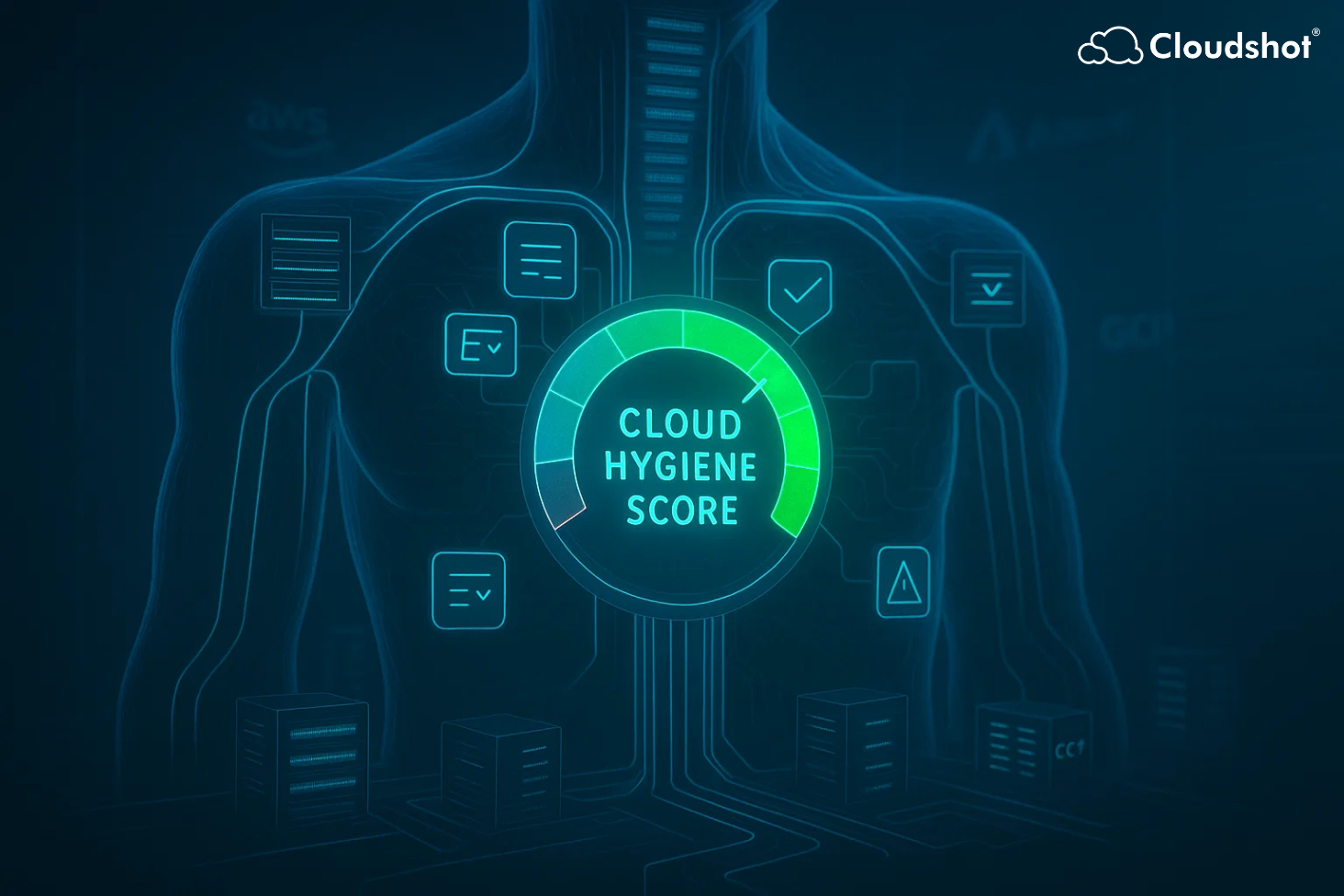When people talk about outages, they usually mention big events: cyberattacks, natural disasters, or major vendor failures.
But one CIO told me a story that made me realize something far more subtle — and dangerous — can be the real trigger.
It wasn't a DDoS attack.
It wasn't a hardware failure.
It was… poor cloud hygiene.
When Hygiene Slips, Risk Rises
For months, their hygiene score had been slipping quietly.
- Untagged resources sat unused, hiding from cost analysis and compliance checks.
- IAM permissions drifted far from policy standards.
- Old, forgotten environments lingered in the shadows.
On paper, nothing was "broken." Systems kept running, reports looked fine, and no alarms went off.
But this slow decline in cloud hygiene was like an immune system weakening over time — no symptoms until the first real challenge hits.
That challenge came on a Friday evening. A misconfigured resource triggered a cascade of failures across multiple regions. Dependencies failed silently until it was too late.
The postmortem revealed the truth: The warning signs had been there for months — hidden in their hygiene score.
What Exactly Is a Cloud Hygiene Score?
Think of it as a health check for your cloud.
It's a composite metric that looks at:
Tagging accuracy
Are resources properly labeled for cost tracking, ownership, and compliance?
Policy compliance
Are configurations aligned with your security and operational standards?
Drift detection
Have resources changed from their intended state without approval?
The higher the score, the cleaner and more reliable your cloud environment. The lower the score, the more risk you carry — whether you see it or not.
The Business Impact of Ignoring Hygiene
Low cloud hygiene doesn't just mean technical risk. It directly affects business outcomes.
Lost Productivity
Teams waste time searching for the right resources, reconciling costs, or manually fixing preventable issues.
Increased Downtime Risk
Configuration drift and policy violations often lead to outages or performance degradation.
Compliance Failures
Missing tags and undocumented changes create audit headaches, increasing the likelihood of penalties.
Budget Overruns
Idle and orphaned resources silently drain budget, leading to unplanned spend spikes.
In short, hygiene is a leading indicator — when it drops, risk goes up everywhere.
How Cloudshot Makes Hygiene Scoring Actionable
Most teams don't track hygiene consistently because it's scattered across tools, spreadsheets, and manual checks. That's where Cloudshot changes the game.
1. Live Hygiene Dashboard
Cloudshot consolidates drift detection, tagging accuracy, and policy compliance into a single score for your entire multi-cloud environment. Whether you're on AWS, Azure, GCP, or all three, you see the big picture in real time.
2. Instant Deterioration Alerts
If your hygiene score drops — say, because of untagged resources, expired policies, or unapproved changes — Cloudshot alerts you immediately. No more discovering problems during an outage postmortem.
3. Self-Remediation Tools
Cloudshot doesn't just flag issues; it empowers teams to fix them without bottlenecks. That means problems are resolved faster and hygiene stays high without slowing down engineering.
Real-World Results
One SaaS enterprise came to us with a hygiene score of 65%. In the last year, they'd experienced multiple small incidents that added up to days of cumulative downtime.
Within weeks of implementing Cloudshot, their hygiene score rose above 95%. The following quarter, their incident frequency dropped sharply. The CTO summed it up:
"We didn't just get fewer outages — we got fewer near-misses. That's just as valuable."
Why CXOs Should Care About Hygiene Scores
For CXOs, cloud hygiene isn't a nice-to-have — it's a strategic advantage.
- Fewer outages mean better customer trust and higher retention.
- Cleaner environments mean faster audits and lower compliance costs.
- Higher visibility means teams work from the same truth, reducing friction between engineering, finance, and security.
When hygiene is high, your cloud operates like a well-maintained machine. When it's low, you're gambling on stability.
Your next outage might already be visible in your hygiene score.
The question is… are you looking?
👉 Book a Demo
See how Cloudshot keeps your cloud immune system healthy — and your business running without surprises.
